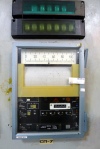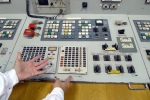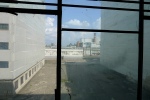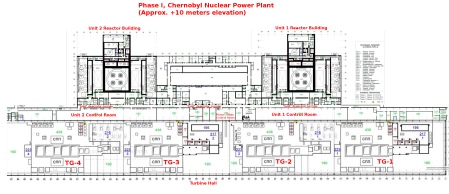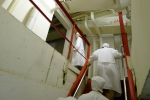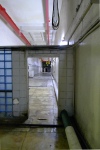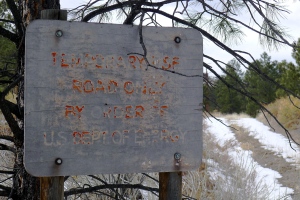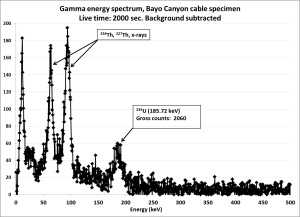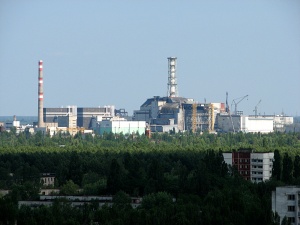 Bayo Canyon, near Los Alamos, NM, was a testing ground for radioactive explosives during and after the Manhattan Project. Unfortunately, though it is public land now, it isn’t the most accessible place. This photo depicts the canyon from its western rim last fall when I tried to get in with a friend. The deep snow was a show-stopper on the trail leading down from the town on that day. There is an access road that enters the canyon and provides for an easy walk to the blast sites, but it is gated, and unauthorized vehicles lured in by an open gate may find it locked when attempting to exit. In spite of the hassle, however, I can now attest that Bayo Canyon is a bona fide destination for radioactive collectibles.
Bayo Canyon, near Los Alamos, NM, was a testing ground for radioactive explosives during and after the Manhattan Project. Unfortunately, though it is public land now, it isn’t the most accessible place. This photo depicts the canyon from its western rim last fall when I tried to get in with a friend. The deep snow was a show-stopper on the trail leading down from the town on that day. There is an access road that enters the canyon and provides for an easy walk to the blast sites, but it is gated, and unauthorized vehicles lured in by an open gate may find it locked when attempting to exit. In spite of the hassle, however, I can now attest that Bayo Canyon is a bona fide destination for radioactive collectibles.
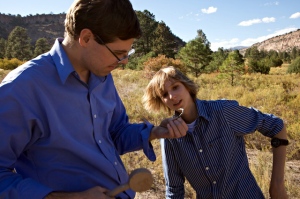 I returned to Bayo Canyon in the company of Taylor Wilson on October 16, and discovered my first radioactive token from this locality—a short piece of shielded two-conductor cable that reads about 600 CPM on a 2″ pancake Geiger tube. It’s not screaming hot, but it means there’s more here. (Photo credit: Tom Clynes; used with permission).
I returned to Bayo Canyon in the company of Taylor Wilson on October 16, and discovered my first radioactive token from this locality—a short piece of shielded two-conductor cable that reads about 600 CPM on a 2″ pancake Geiger tube. It’s not screaming hot, but it means there’s more here. (Photo credit: Tom Clynes; used with permission).
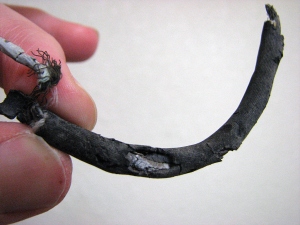 Los Alamos’ TA-10 facility in Bayo Canyon entered its decommissioning phase in 1960, and since then the canyon floor has been subject to sustained scrutiny from cleanup crews. However, it’s obviously true that a persistent and focused hobbyist with good radiation detection equipment can beat a veritable army of government nine-to-fivers when it comes to truffling out the good stuff. The DOE’s Radiological Survey of the Bayo Canyon, Los Alamos Final Report (1979) explains the nature of the residual contamination:
Los Alamos’ TA-10 facility in Bayo Canyon entered its decommissioning phase in 1960, and since then the canyon floor has been subject to sustained scrutiny from cleanup crews. However, it’s obviously true that a persistent and focused hobbyist with good radiation detection equipment can beat a veritable army of government nine-to-fivers when it comes to truffling out the good stuff. The DOE’s Radiological Survey of the Bayo Canyon, Los Alamos Final Report (1979) explains the nature of the residual contamination:
Because of the wide dispersal of debris by the tests and continuing natural erosion processes, it was recognized at the time of decommissioning that there was a reasonable probability that some high-explosive and some potentially radioactive materials remained in the canyon. Thus, periodic surface surveys and searches were conducted in 1966, ’67, ’69, ’71, ’73, ’75, and ’76. During such surveys a number of additional pieces of debris were located, with only a few of them being contaminated with “°Sr or including normal or depleted uranium.
 Indeed there are many remaining pieces of debris, often entertaining in their own right if not detectably radioactive. The pieces of metal in this last photo are representative; both exhibit extreme distortion from the force of whatever blast hurled them through the woods sixty years ago.
Indeed there are many remaining pieces of debris, often entertaining in their own right if not detectably radioactive. The pieces of metal in this last photo are representative; both exhibit extreme distortion from the force of whatever blast hurled them through the woods sixty years ago.







